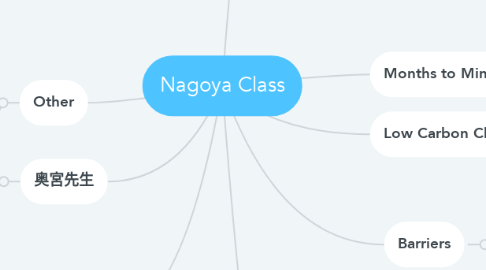
1. Other
1.1. Equity Challenge
1.2. Resilience Challenge
2. 奥宮先生
2.1. http://www.nuac.nagoya-u.ac.jp/index.html
3. 街づくり
3.1. Broadway Corridor
3.1.1. Bill Henry
3.1.1.1. Why district energy might work
3.1.1.2. Seasonal Storage
3.1.1.2.1. Hydrogen
3.1.1.3. Distributed Thermal Storage
3.1.2. Alisa Kane
3.1.2.1. Why District Energy hasn’t worked
3.1.2.2. Brewery Block thing not using TES
3.1.3. PGE Andy
3.1.3.1. TES for Broadway?
3.1.3.2. Still Interested in Brewery Block
3.1.4. Andria Jacob
3.1.4.1. Think Energy
3.1.5. Ken Dragoon
3.1.5.1. Smart Water Heaters
3.1.5.2. Hydrogen
3.1.6. QUESTIONS
3.1.6.1. City and PGE’s relationship — is ETO involved?
3.2. Smart Grid Test Bed
3.2.1. Josh Keeling
3.2.2. That guy...
3.3. Green Buildings / PDX/PSU
3.3.1. Tu
3.4. Alan Scott the Architect
4. Months to Minutes
4.1. aMW —> iMW
5. Low Carbon Challenge
5.1. Wind & Solar integration
6. Barriers
6.1. Cyber Security
6.2. Institutional
6.2.1. Codified
6.2.1.1. 1980 NW Power Act
6.2.1.2. Energy Trust
6.2.2. Interpreted
6.2.2.1. Other non-energy values
6.2.2.1.1. Cool!
7. The Dan Goal
7.1. The ONE Take-away
7.1.1. A Flexible Campus is sustainable, affordable, and resilient campus
7.2. Get a gig with Nagoya U for 3-6 months!
7.3. Leader of the Transformation through democitization of the intellect
7.4. I can help Nagoya communicate smart energy with people
7.5. Thoughts about take-aways
7.5.1. Flexibility is King
7.5.1.1. Flexible Demand is cheapest way to accommodate Variable Generation
7.5.1.2. Coal and Nuclear are difficult to integrate, too
7.5.1.2.1. have to pay someone to take it
7.5.1.3. Nuke retirement driven largely by inflexibility
7.5.1.3.1. French can do this!
7.5.2. Months to Minutes
7.5.3. Pay as You Go
7.5.3.1. DSG
7.5.3.1.1. Helps the grid until it can no longer help itself
7.5.3.1.2. On-going value and Just-in-case value
7.5.4. Microgrids make sense only if you can manage loads very effectively
7.5.4.1. otherwise you need WAY too much capacity
7.5.5. We're all in this alone together
7.5.6. California way ahead --
8. Background
8.1. US
8.1.1. Fuel Mix
8.1.1.1. Foreign need
8.1.1.1.1. Transportation fuels
8.1.1.2. Domestic Energy Resources
8.1.1.3. Nuclear
8.1.1.3.1. Sierra Club OK
8.1.1.3.2. Environment and promise of cost, not peace
8.1.2. Number of Utilities
8.1.3. Types of Utilities
8.1.4. Rate Setting
8.1.4.1. PUC
8.1.4.1.1. PGE
8.1.4.1.2. IOU
8.1.4.2. City Council
8.1.4.2.1. Seatlle
8.1.4.2.2. Muni
8.1.4.3. Board
8.1.4.3.1. PUD
8.1.5. Size of Typical Power Station
8.1.5.1. 1 or 2
8.1.5.2. Because of population density
8.1.6. ISO/RTO
8.1.6.1. CAISO
8.1.6.2. PJM
8.1.7. Few CHP and District Energy Systems
8.1.7.1. Low cost of fuel
8.1.7.2. High risk of off-taker leaving
8.2. California Solar Tsunami
8.2.1. Negative Prices
8.2.2. PV Scale
8.2.2.1. But don’t let them think this is the whole story!
8.2.2.2. 1/3+ is rooftop!
8.2.3. Curtailments
8.2.3.1. Less than before due to EIM, but...
8.2.4. Problem with ZEH!
8.3. Oregon
8.3.1. Carbon Goal
8.3.2. EIM
8.4. Homes
8.4.1. Size
8.4.2. Central Heating and Cooling
8.4.3. Thermostats
8.4.4. Natural Gas
8.5. Portland
8.5.1. Pressure from People
8.5.2. Story by City
8.5.3. Action by PGE
8.5.4. Pacific Power Follows
